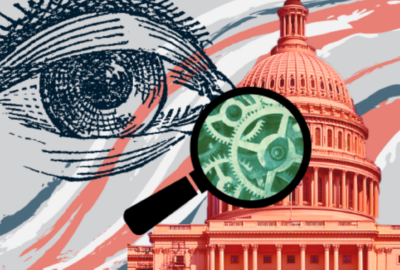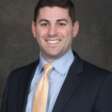Capitol Hill always has been filled with two kinds of people—the young up-in-comers, maybe a bit idealistic, some would consider them “go-getters” looking to get into politics; and older, political junkies who got bit by the bug and never left.
And then there are the members. The incumbency rate is around 93 percent.
The one constant among these groups is the need to continually learn and gain new skill sets as technology and topics are constantly changing.
The House Administrative Officer is charged with trying to help members, their staffs and others–a total of 10,000 people–adapt, change and continually be prepared for the future.
CAO’s human resources department is trying to make members’ lives easier by providing what many would call shared services and tools.
The office has been on journey to modernize its processes over the last three years. Its focus has been on customers, technology, tools and processes.
And unlike many executive branch agencies, there is no one to mandate members use a specific service or tool so ensuring the CAO is providing resources that are valuable, cost effective and secure is the only way to address some of these long-standing challenges.
John Salamone, the chief human resources officer at the Office of the Chief Administrative Officer for the U.S. House of Representatives, said over the past two years the CAO’s office has aligned its human resources strategy with its technology strategy to address paper-based, manual processes and bring training, hiring and other human capital programs into the 21st century.
“We brought new technology in and we just ran our first engagement survey for the first time in 12 years and are getting good data, good information on things that we need to be doing, really bringing a lot of workforce planning to the CAO organization, and really instituting a lot of best practices that we’re really proud of,” Salamone said on the discussion “How the House is Modernizing its Human Capital Programs” sponsored by Cornerstone. “I’m hoping we’re one of the draws that the modernization committee paid attention to, as they were standing up the requirements for the HR hub.”
The House Select Committee on Modernization made 97 recommendations over a 20-month period addressing everything from procedural reforms to public and internet facing digital transformation suggestions.
One set of recommendations focused on the CAO establishing a central HR program for members, committees and staff.
Salamone said the CAO office has been putting together an action plan to provide these types of services to the members for the past few years.
“When I came here, I realized that we had very outdated practices. We did not have any technologies to manage our hiring process. Everything was very manual, resumes would come in, and they would get sorted and put into a file and on someone’s shared drive. We would be managing the application process that way,” he said. “We started to build the business case using manual data that we had to count, to lay the groundwork for bringing in a new applicant tracking system, to manage how we are bringing talent into the organization, how we’re partnering with hiring managers to make the process more efficient and more effective. Over the last year, we’ve had this technology deployed, I think it perfectly positions us to find ways to expand that for member offices, if they so choose to want to use that service.”
Richard Cappetto, the chief customer officer in the office of the chief administrative officer for the U.S. House of Representatives, said the CAO faced similar problems in trying to provide a modern approach to professional development, training and education.
He said the new technology platform is not only changing the way the CAO provides training, but making it easier to take and track courses.
“Now we’ve got a fully automated system, where we can pull a lot of that data based on what courses people want to take, when’s the time that’s most convenient for them to take it. We have a zero sign on experience, so you’re not having to remember multiple username and passwords,” Cappetto said. “One of the biggest customer pain points that that helped open up this project we’ve been able to solve, which is that chiefs of staff or members were coming to me and explaining that they were spending hours tracking their staffs required training. Each of those were run out of different systems, where you were issued a paper certificate. For managers to track if their office was compliant, they were literally printing certificates and keeping them in manila folders to have to track all of their staff and if they were compliant, so it was a huge pain point, a waste of valuable time for a chief of staff. And now we’re able to eliminate that for them.”
The CAO has been on a continuous improvement track to refine the services based on customer feedback.
Cappetto said the success of the changes are real. He said CAO has seen an increased number of members and staff registering and attending training classes and requests for support to sign up for training.
“Nothing we do is mandatory so we have to appeal to our customer and make it something they want to do, see a value in doing and make it easy for them to do,” he said. “There are some features of the learning management system that we haven’t turned on yet. There are some social aspects where we can have chat boards and communities of interest. We are hoping we will turn it on and have something like a moderated channel. We also are hoping to leverage the LMS to introduce cohort learning where we take a group of people and bring them through a curriculum together because we have observed that the learning that takes place with the same group of people going through a set of training is more dynamic and better. We hadn’t been able to do those things in the past.”
Salamone said the future of the hiring, training and other human resources efforts is going to be much more data driven and focused on outcomes.
“I would envision that the central HR hub would work very, very closely with the new House Office of Diversity and Inclusion to identify candidate sources where we can make sure that we are reaching more diverse affinity groups through job posting sites. Through the CAO organization, and with the applicant tracking system, we’re working with an organization called the professional diversity network and they in their umbrella have several affinity group job sites,” he said. “We’re now able to track how those applications are coming in when we post all of our jobs there. I think that is something that we could explore as we’re standing up the HR hub, and then using the technology, the applicant tracking system technology, to see how well we’re improving diversity recruitment is one area.”
How the Office of the Chief Administrative Officer Provides Support
We are truly aligned with the mission of the organization and aligning our human resources services to the mission. We brought new technology in, just ran our first engagement survey for the first time in 12 years and getting good data, good information on things that we need to be doing, really bringing a lot of workforce planning to the chief administrative organization, and really instituting a lot of best practices, and I'm hoping we're one of the draws that the modernization committee paid attention to, as they were standing up the requirements for the HR hub.
John Salamone
Chief Human Resources Officer, Office of the Chief Administrative Officer, U.S. House of Representatives
Modernizing the Human Capital Approach
Now we've got a fully automated system, where we can pull a lot of that data based on what courses people want to take, when's the time that's most convenient for them to take it. We have a zero sign on experience, so you're not having to remember multiple username and passwords. And one of the biggest customer pain points that that helped open up this project we've been able to solve, which is that chiefs of staff or members were coming to me and explaining that they were spending hours tracking their staffs required training. Each of those were run out of different systems, where you were issued a paper certificate. For managers to track if their office was compliant, they were literally printing certificates and keeping them in manila folders to have to track all of their staff and if they were compliant, so it was a huge pain point, a waste of valuable time for a chief of staff. And now we're able to eliminate that for them.
Richard Cappetto
Chief Customer Officer, U.S. House of Representatives
Technology Upgrades for Modernization
I would envision that the central HR hub would work very, very closely with the new House Office of Diversity and Inclusion to identify candidate sources where we can make sure that we are reaching more diverse affinity groups through job posting sites. Through the CAO organization, and with the applicant tracking system, we're working with an organization called the professional diversity network and they in their umbrella have several affinity group job sites. We're now able to track how those applications are coming in when we post all of our jobs there. I think that is something that we could explore as we're standing up the HR hub, and then using the technology, the applicant tracking system technology, to see how well we're improving diversity recruitment is one area.
John Salamone
Chief Human Resources Officer, Office of the Chief Administrative Officer, U.S. House of Representatives
Listen to the full show:
Copyright
© 2024 Federal News Network. All rights reserved. This website is not intended for users located within the European Economic Area.









